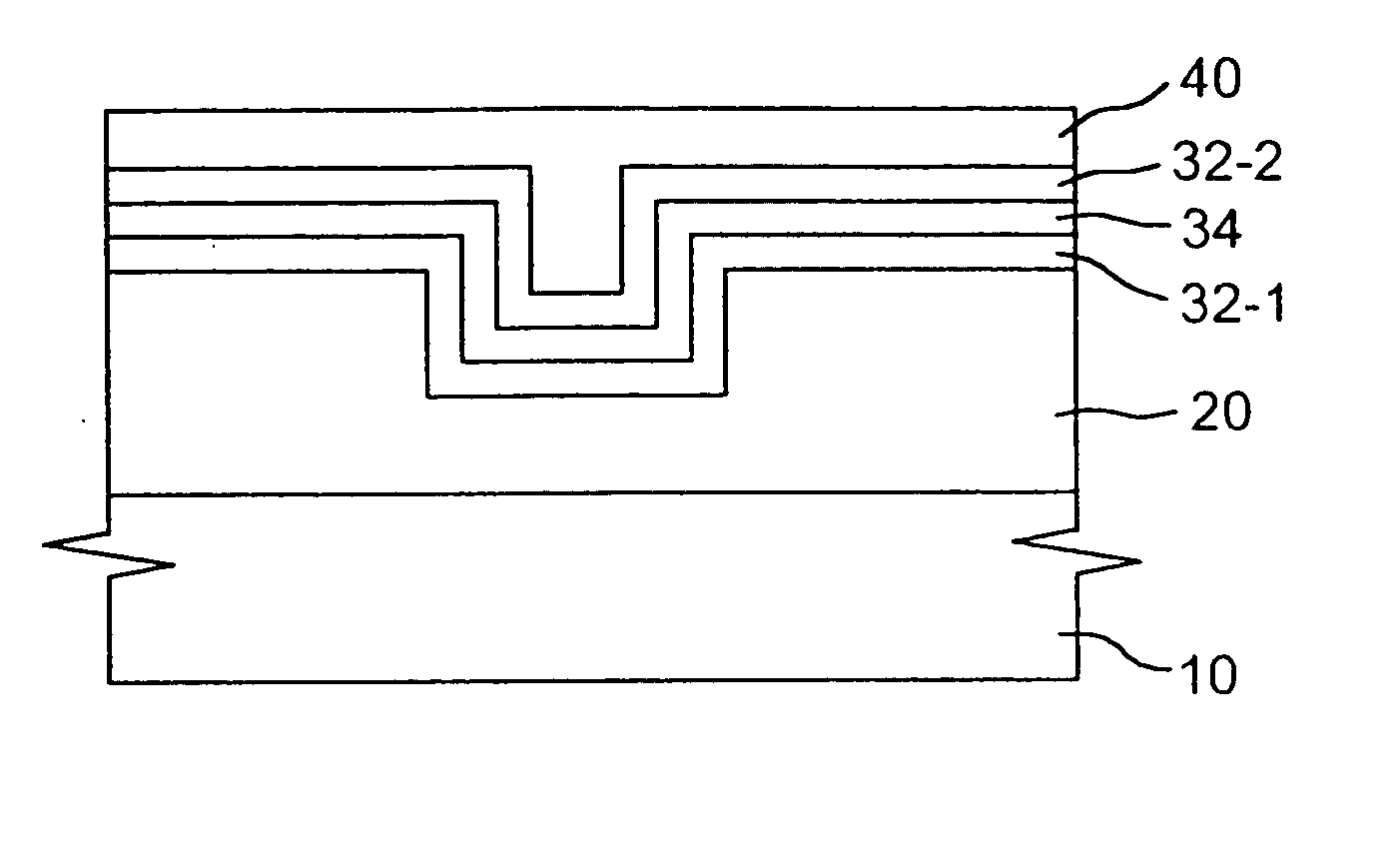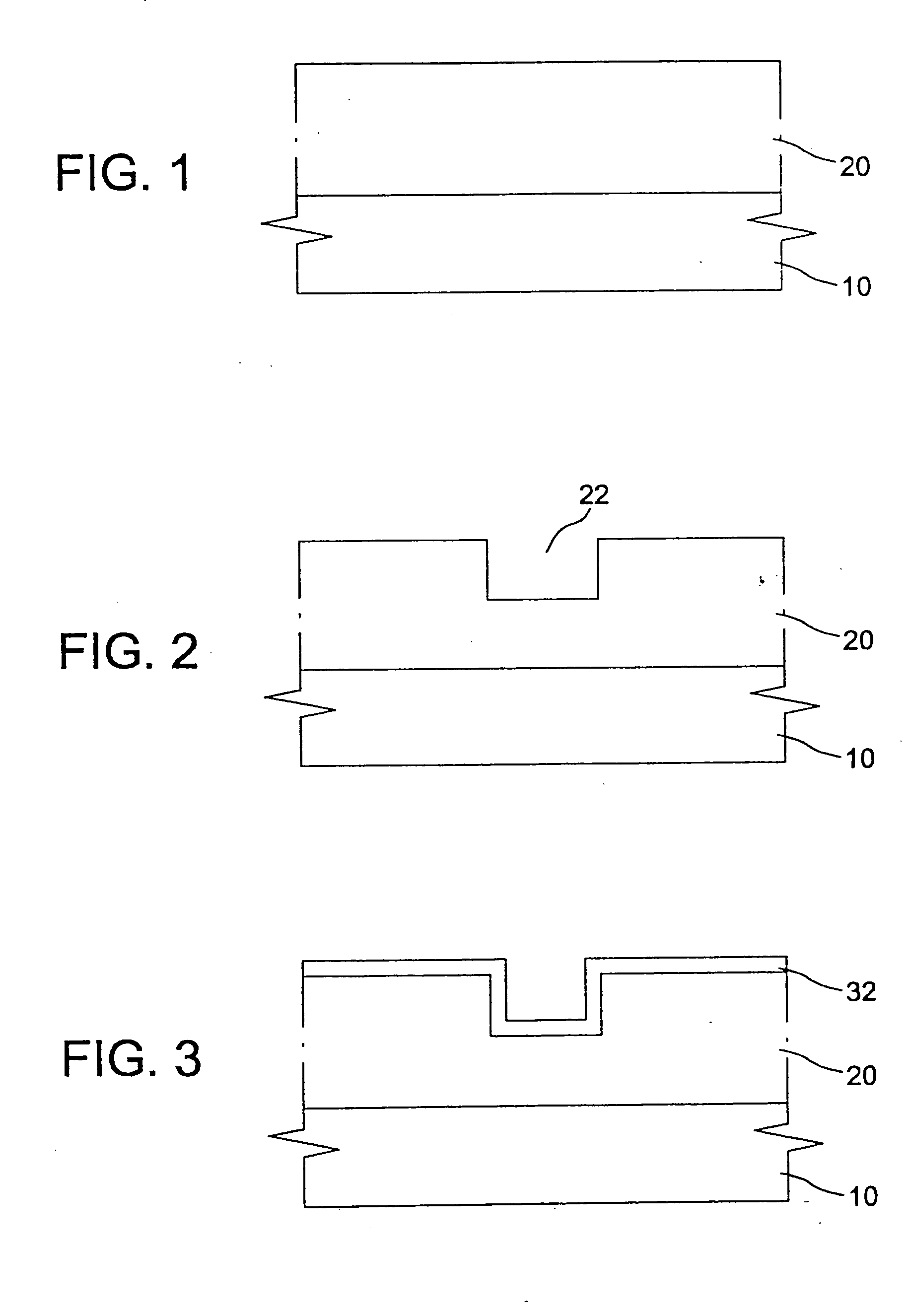Copper interconnect structure having stuffed diffusion barrier
a diffusion barrier and copper interconnect technology, applied in the direction of chemical vapor deposition coating, coating, electrical equipment, etc., can solve the problems of cutting in the interconnection line, lack of excellent properties of cu, and inability to form a dense protective layer of cu
- Summary
- Abstract
- Description
- Claims
- Application Information
AI Technical Summary
Benefits of technology
Problems solved by technology
Method used
Image
Examples
Embodiment Construction
[0027] The present disclosure teaches processes for forming a diffusion barrier in the context of copper metallization, as well as diffusion barriers formed by these processes. However, the skilled artisan will appreciate that the present processes and structures have applications in other contexts.
[0028] The present invention will now be described in connection with preferred embodiments with reference to the accompanying drawings.
[0029] A diffusion barrier is a material that is inserted between two substances in order to prevent the substances from being mixing with each other due to diffusion. In a semiconductor device fabrication process, the diffusion barrier is used not only to prevent the diffusion between a substrate and interconnection material but also to block the interconnection material from diffusing into a dielectric film.
[0030] Diffusion barriers can be roughly classified into passive barriers, non-barriers, single crystal barriers, sacrificial barriers and stuffe...
PUM
| Property | Measurement | Unit |
|---|---|---|
| thickness | aaaaa | aaaaa |
| thickness | aaaaa | aaaaa |
| pressure | aaaaa | aaaaa |
Abstract
Description
Claims
Application Information
 Login to View More
Login to View More - R&D
- Intellectual Property
- Life Sciences
- Materials
- Tech Scout
- Unparalleled Data Quality
- Higher Quality Content
- 60% Fewer Hallucinations
Browse by: Latest US Patents, China's latest patents, Technical Efficacy Thesaurus, Application Domain, Technology Topic, Popular Technical Reports.
© 2025 PatSnap. All rights reserved.Legal|Privacy policy|Modern Slavery Act Transparency Statement|Sitemap|About US| Contact US: help@patsnap.com



